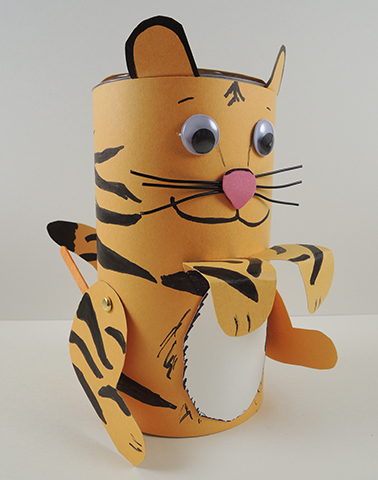
Can you tiptoe your tiger through the forest without making a sound?
We recommend reading The Tiptoeing Tiger by Philippa Leathers (Candlewick Press, 2018, read here by DaddyRead2Me). When Tiger prowls the forest, the other animals NOTICE and move away. But not Little Tiger. No one is afraid of him in the slightest! So he contrives to sneakily tiptoe around the forest until he thoroughly terrifies someone. It doesn’t work with Boar, Elephant, or the monkeys…but Little Tiger might have met his match at the pond!
You’ll need:
- 1 small oatmeal container
- Construction paper and/or poster board
- 2 brass fasteners
- 2 craft sticks, approximately 3″ long
- Scissors, tape, and box cutter for construction
- Markers for decorating
Begin by decorating a small oatmeal container like a tiger. For added texture, we used a pair of wiggle eyes, a bit of self-adhesive foam for the nose, and twisteez wire whiskers, but you can also just use markers to add these features. The dynamic part of the project comes when you add the moveable back legs!
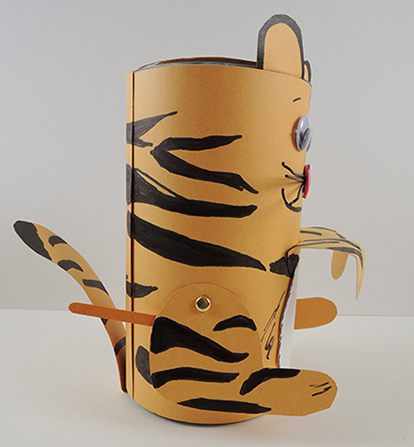 Use a box cutter to make small slices in the oatmeal container, then attach the tiger’s back legs to the body using brass fasteners. Next, attach two, 3″ long craft sticks to the legs, leaving plenty of room for you to grasp the sticks. To operate, move the sticks up and down while gently sliding the oatmeal container forward, and you have yourself a splendid tiptoeing tiger!
Use a box cutter to make small slices in the oatmeal container, then attach the tiger’s back legs to the body using brass fasteners. Next, attach two, 3″ long craft sticks to the legs, leaving plenty of room for you to grasp the sticks. To operate, move the sticks up and down while gently sliding the oatmeal container forward, and you have yourself a splendid tiptoeing tiger!

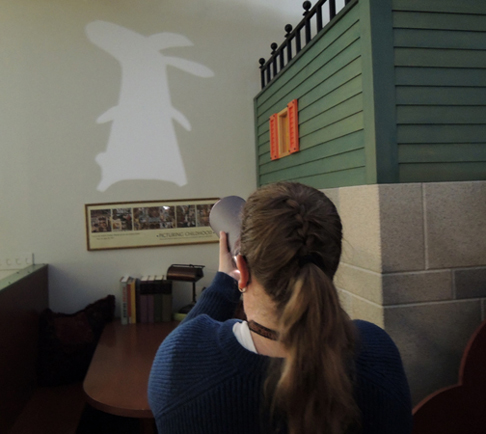
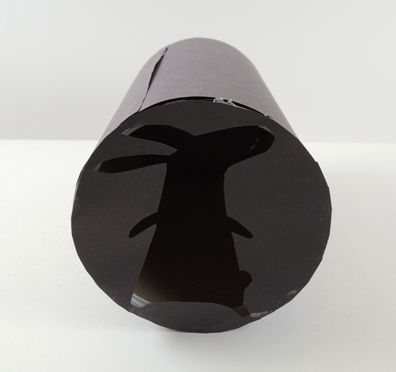
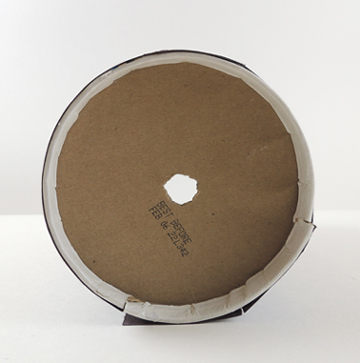 Find a darkened room, activate the flashlight on your cell phone, and place the light against the pinhole of the container. Point the image towards the wall and watch the magic happen! Move closer to the wall for a smaller projected image, and further away for a super large projected image.
Find a darkened room, activate the flashlight on your cell phone, and place the light against the pinhole of the container. Point the image towards the wall and watch the magic happen! Move closer to the wall for a smaller projected image, and further away for a super large projected image.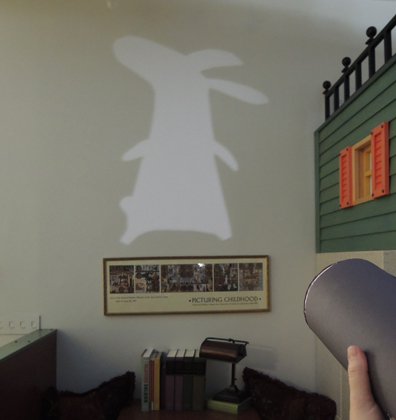 FYI: we discoverd that a cell phone flashlight definitely works best. We tried a regular flashlight and found it produced a blurrier, less definied image, as seen below.
FYI: we discoverd that a cell phone flashlight definitely works best. We tried a regular flashlight and found it produced a blurrier, less definied image, as seen below.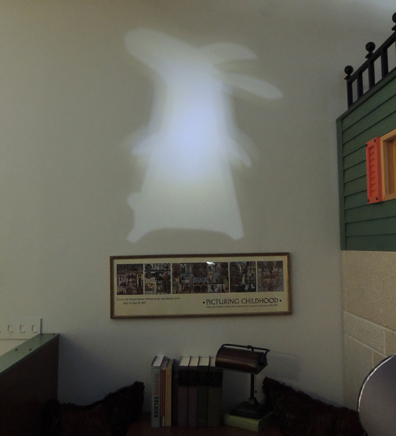
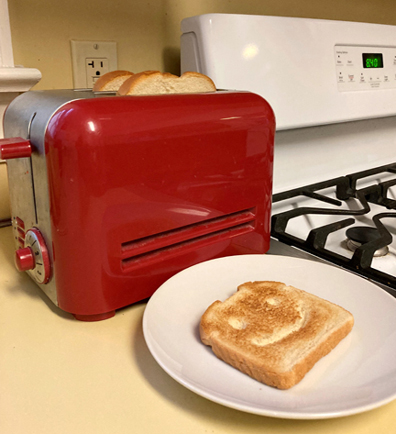
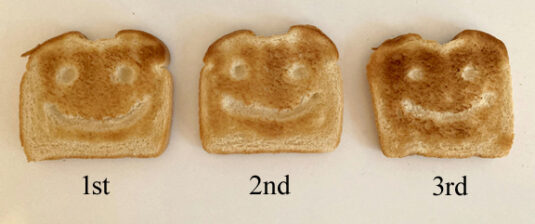 The answer is basically no. Above you can see 3 slices of toast cooked on the 1st, 2nd, and 3rd settings on my toaster. The design appears about the same. Or…maybe I did the experiment so I would have an excuse to eat three yummy slices of toast that morning? Hmmmmm. Totally not telling.
The answer is basically no. Above you can see 3 slices of toast cooked on the 1st, 2nd, and 3rd settings on my toaster. The design appears about the same. Or…maybe I did the experiment so I would have an excuse to eat three yummy slices of toast that morning? Hmmmmm. Totally not telling.